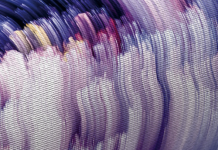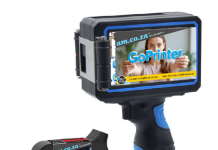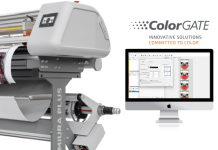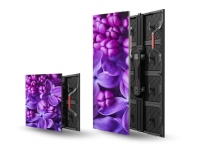According to Gerber Technology, the shift toward soft signage is only one aspect of the expanding printed materials market. The growing accessibility of versatile automation tools enable even the most traditional signage shops to enter other growing markets, including apparel, home furnishings, and packaging.
1. The printing industry is expanding into new markets
As recently as four years ago, apparel was only a small fraction of the overall market, and it has grown exponentially ever since. That growth is driven by the modern consumer’s see-now-buy-now mentality where they want things more quickly and where almost everyone has the ability to pull up the internet on their phone and order what they see before they forget about it. The recent growth spurt is also driven by the world of fast fashion where people are doing shorter runs of production and designing more clothing lines more frequently.
The various bases for this trend, as well as evidence of the trend itself, strongly indicates that digital printing is going to continue to grow and also means that digitally printed apparel is going to be found more acceptable by a broader range of consumers as production speed and customisability become more important. Considering the world of mass customisation and on-demand manufacturing, it is not just the large apparel providers and contract manufacturers across the world that feel the increased demand in the cutting and sewing of garments. It is the shops that enable smaller runs and localised production that consumers are going to turn to to get their products faster, and even a slight increase in demand for quickly delivered customisable products is being felt strongly by smaller producers.
2. The growing demand for quality printed material
The custom apparel market is growing in demand among many industries and organisations, including among nonprofits and smaller grassroots-type groups where custom T-shirts, hats, lanyards and bumper stickers are standard fare. With the growth of various exercise markets, the demand for high quality sports apparel has grown in response, particularly around sports and sporting events that tend to attract higher wealth consumers. The ability for smaller vendors, for example, to purchase small batch branded sports team apparel, such as a Small Biz, LLC logo branded L.A. Dodgers T-shirt, has given such vendors an additional way to impress their clients or prospective business partners during networking or business wooing events. Likewise, the demand for custom packaging has grown in response to the lower cost and ease of producing relatively small scale batches of branded labels, displays, containers and other types of custom package materials.
Another area of growing demand is in complimentary merchandise (or ‘swag’). Everybody loves swag, and businesses love to give it. Not only is swag a great way to get a company’s brand in front of fresh eyes, it gives companies the opportunity to form a relationship with prospective consumers even before they tried a company’s products or services. When a business hands out sticker-branded or shoddily crafted branded complimentary merchandise, the merchandise is far more likely to end up in the trashcan than a high quality piece of swag. Even if a swag receiver is not a fan of the brand, they might very well wear a comfortable T-shirt with quality brand printing that does not appear ‘cheap’ or carelessly made.
Likewise, the same user might be inclined to use a durable tote bag with nice looking printed branding even if they have never even heard of the company or product previously. Without even realising it, a user who incorporates a branded piece of swag into their daily routine forms a sort of relationship with the brand such that they will more readily consider that brand for their own future needs or will more readily recommend that brand to others. The availability of affordable, customisable soft-printed swag to small and medium size businesses has created opportunity for a much more even playing field in local marketplaces.
3. Avoiding bulking up capability at the expense of slowing down production
As soft material printers become less expensive and easier to procure and to use in everyday business, the need for more practical cutting and finishing tools grows in proportion. The need for more functionality, however, does not necessitate crowding the shop with additional machinery or slowing down production with additional processes. A versatile tool can replace traditional print/sign shop finishing, which may very well be outdated and impractical to maintain as it is, in addition to adding invaluable new functionalities, such as soft signage production and bringing outsourced finishing processes back in-house.
Read the top 5 stories weekly on WhatsApp or sign up to our newsletter.
GERBER TECHNOLOGY https://www.gerbertechnology.com/















